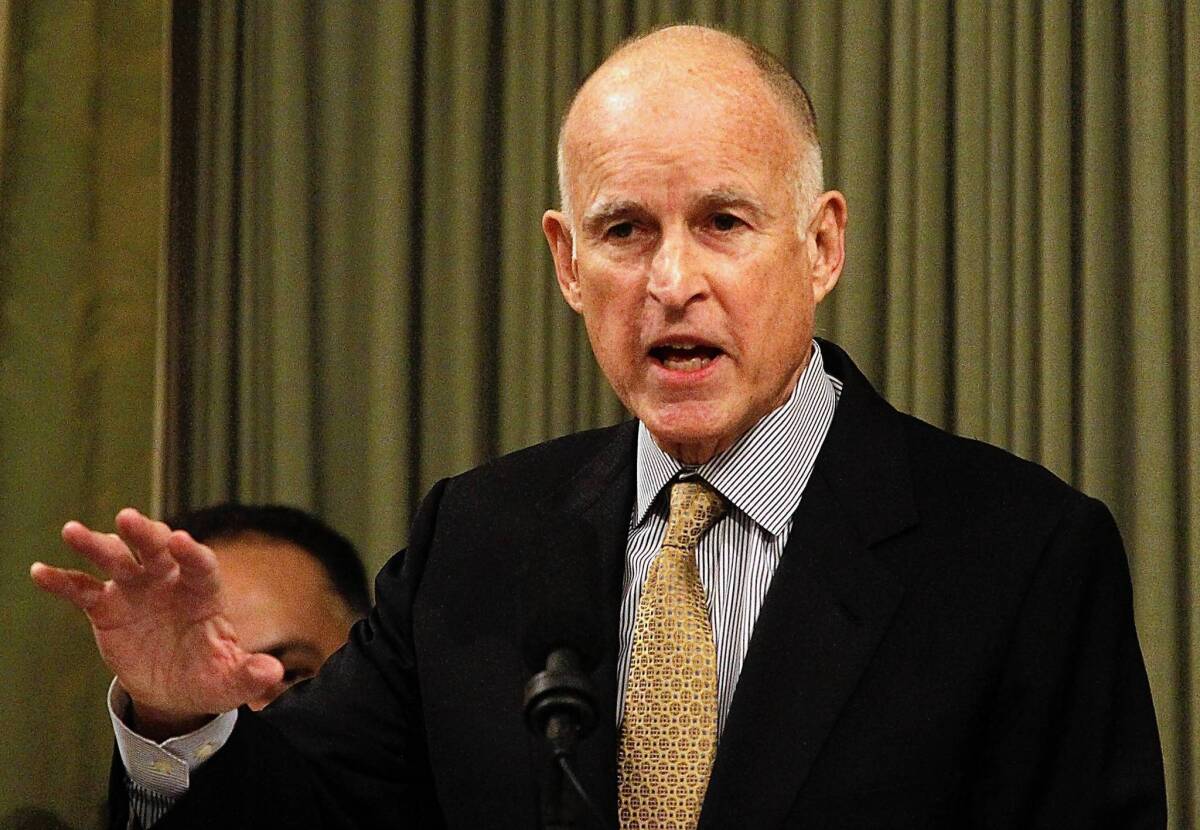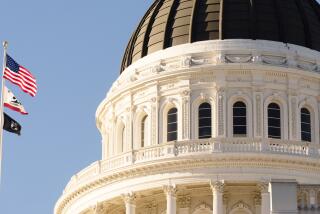Analyst disputes Brown’s budget outlook as too glum

SACRAMENTO — California’s financial picture is much brighter than Gov. Jerry Brown suggested in his latest spending plan, according to the Legislature’s top budget advisor, who said the state will have $3.2 billion more at its disposal than the governor estimated.
Improvements on Wall Street and in the state’s housing market will mean about $4.4 billion in extra cash through the next budget year, rather than the $1.2 billion the governor has projected, nonpartisan Legislative Analyst Mac Taylor said in a report Friday.
And federal tax changes, which have reduced Californians’ take-home pay this year, will cost the state less than the governor suggests, the report said.
Brown’s latest budget plan, released Tuesday, “seems too pessimistic,” the report said. “We do not agree with the administration’s view that there has been a significant dimming of the state’s near-term economic prospects.”
Much of the extra money, derived from tax receipts, would be directed to schools under the state’s education funding law. But the new figures could still make it hard for the governor to keep a lid on spending in the Capitol, where he and lawmakers already disagree on how much California’s economy is improving and how any extra money should be used.
Democratic legislators quickly embraced the analyst’s higher numbers.
Assembly Budget Chairman Bob Blumenfield (D-Woodland Hills) said in a statement that the administration’s outlook contradicts “a growing consensus” among economic forecasters that echoes Friday’s report.
“Dim assumptions can lead to dim decisions that sabotage our economic recovery,” Blumenfield said.
Many lawmakers are eager to restore aid to the needy that was cut to balance the budget in recent years. They want money for such items as adult dental care, larger reimbursements for doctors in the state Medi-Cal system, higher benefits for welfare recipients and more money for cash-strapped state courts.
Brown has said the state does not have the funds for such increases.
A spokesman for Brown’s Department of Finance, H.D. Palmer, noted that Taylor’s report relies on unpredictable capital gains taxes for its higher revenue estimate. Building a budget around the more optimistic figures could “jeopardize the fiscal progress that has been made over the past two years,” Palmer said.
Even Taylor said lawmakers should be cautious, despite his findings. He urged the Legislature to use new money to build up a reserve fund or address the rising cost of teacher pensions.
“We dug out of a big, deep hole,” he said at a news conference, referring to the state’s emergence this year from years of deficits. “And the last thing we want to do is start another one.”
Revenue projection is not an exact science. The Wall Street ratings agency Standard & Poor’s expressed concern in a report last year about political influence on budget estimates, which it said can “give rise to unfounded revenue projections.”
Indeed, governors and legislators have long been accused of tweaking their financial formulas to suit an agenda — making rosy assumptions when California faced steep deficits, for example, to avoid ever deeper cuts in services.
Brown’s 2011 budget plan overestimated revenue by billions of dollars. Now, the governor is focused on keeping the deficit from coming back.
“We don’t do forecasts to come up with a preconceived notion,” Palmer said. “The forecasts generate what they generate.”
In announcing his latest budget blueprint Tuesday, Brown reiterated his administration’s finding that the economy remains unstable. He warned lawmakers not to plan on returning spending to pre-deficit levels. That’s still the cautious thing to do, said Kevin Gordon, a lobbyist for schools — the main beneficiary of Brown’s latest spending proposals.
“There’s any number of interest groups — including us in education — that are interested in grabbing onto whatever revenue materializes,” Gordon said Friday.
Brown and lawmakers will be haggling over the proposed $96.4-billion budget for the next several weeks. The Legislature is required to approve a spending plan by June 15, and the governor has until the end of June to sign it.
Assembly Speaker John A. Pérez (D-Los Angeles) said the numbers from Taylor’s office are close to what he expected, though he doesn’t necessarily view them “as an automatic green light to increase spending.”
Pérez and Republicans have discussed setting aside money in a rainy-day fund to insulate the state from future economic downturns, although they disagree on the best way to do so.
Brown has said he places a priority on paying off the state’s debts, including those incurred to close budget deficits, and repaying money owed to schools, local governments and various state programs.
Times staff writer Anthony York contributed to this report.
More to Read
Sign up for Essential California
The most important California stories and recommendations in your inbox every morning.
You may occasionally receive promotional content from the Los Angeles Times.











